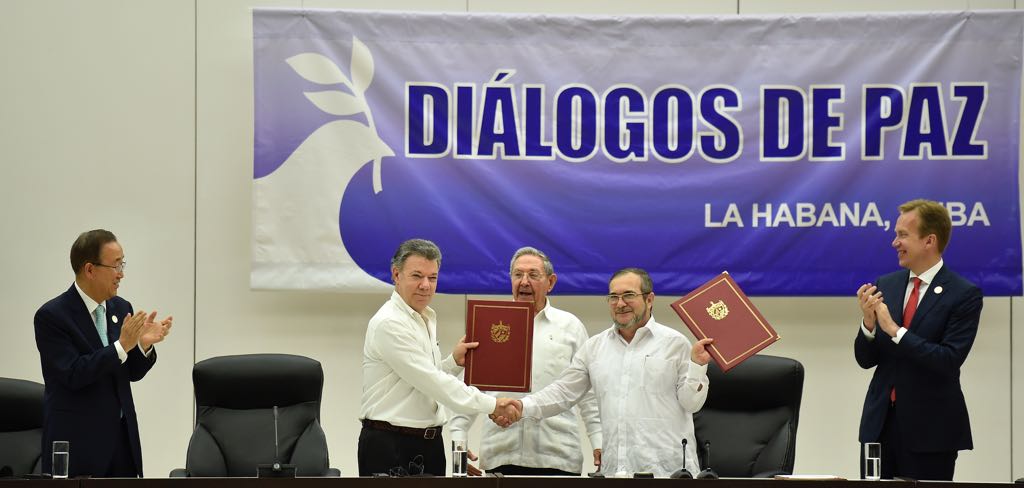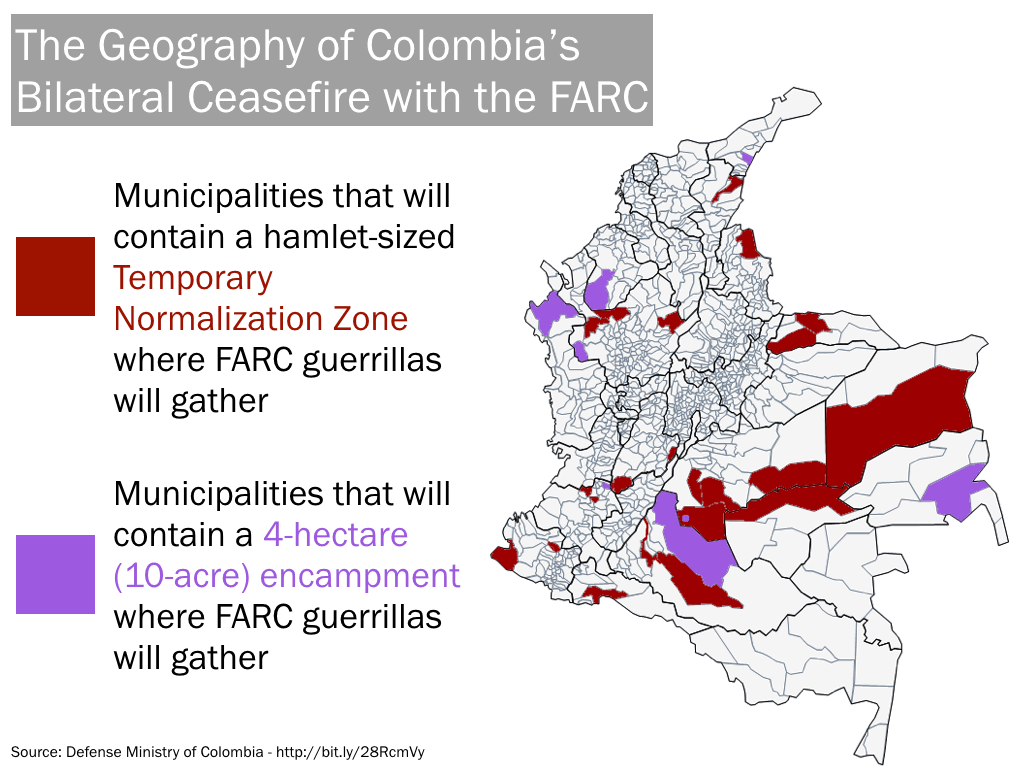(First posted to World Policy Blog, October 19, 2016)
Mass demonstrations led by indigenous communities are taking place in Colombia’s capital of Bogotá in defense of the country’s historic peace accord. On Aug. 24, the Colombian state and the Revolutionary Armed Forces of Colombia (FARC) announced an end to the 52-year brutal internal armed conflict that killed over 220,000 people and generated over 8 million victims. The world applauded when the peace accord was signed in the historic city of Cartagena on Sept. 26. Surprisingly, voters rejected the peace referendum by a narrow margin of less than 1 percent on Oct. 2. Multiple factors—Hurricane Mathew; a high level of abstention; an effective campaign by peace opponents to manipulate, misinform, and mislead voters into voting No; and overconfidence that the Yes vote was a given—led to this unfortunate outcome. Currently, Colombia’s peace with the FARC is in limbo with the parties attempting to salvage the peace process by trying to address concerns of the No voters.
Looking at a map of the votes, what is most evident is a tremendous difference of opinion between rural Colombians directly affected by the conflict and the mostly urban Colombians whose relationship with the war consists of viewing it on TV. Areas where conflict, violence, and displacement run rampant voted in favor of the peace accord, as did the majority of the zones where victims, indigenous peoples, and Afro-Colombians live. In other words, Afro-Colombians and indigenous, who make up a disproportionate number of the conflict’s victims, are the strongest proponents of the peace accord. Therefore, it is no surprise that they are now organizing to tell the world that Colombia should not delay implementation of the agreed-upon accord.
When the peace process began, ethnic minorities were not part of the agenda. The points to be negotiated included agrarian reform, political participation, victims, drugs, and verification/implementation of the agreement, but the process did not include these populations or consider their rights. When they realized this was the case, Afro-Colombian national and regional groups including territorial authorities, displaced people, women, youth, trade unionists, and religious sectors formed the Afro-Colombian Peace Council (CONPA) in 2014. A year later, CONPA joined forces with major indigenous groups to speak with one voice as the Ethnic Commission for Peace and Defense of Territorial Rights.
The Ethnic Commission proceeded to run a global campaign to get their opinions heard at the peace table. After multiple advocacy efforts that gained support from the Obama administration, the U.S. Congress, and the U.N., on June 26-27 the parties to the negotiations held formal discussions with afro-descendant and indigenous representatives in Cuba. The outcome of this engagement was the inclusion of the “Ethnic Chapter” in the final peace accord. This Chapter includes principles applicable to the entire accord that guarantee that Afro-Colombians’ and indigenous peoples’ rights are safeguarded. It establishes a High Level Ethnic Commission to help guide implementation in a manner that guarantees their participation in the process. This is a historic achievement for a sector of Colombian society that is often excluded and acutely suffers from the legacies of colonialism and slavery.
In the post-referendum debates, former President Álvaro Uribe Vélez, one of the leaders of the No campaign, flatly stated on national television that “Colombia is not an African tribe but a country of institutions” when asked for his opinion regarding the Ethnic Chapter. The Ethnic Commission is therefore taking to the streets and engaging in advocacy to guarantee that their ethnic rights victory does not get watered down by the parties who are trying to appease the opponents of peace and calm the turmoil they generated.
In another shocking twist, President Juan Manuel Santos was announced as the 2016 Nobel Prize winner and has stated that he will be donating the funds to the victims of the conflict, including Afro-Colombians who survived the horrific Bojayá massacre of 2002. Shortly after, he also revealed that formal peace talks between his government and the country’s second guerilla group, the National Liberation Army (ELN), will begin on Oct. 27 in Ecuador. While analysts project that the ELN will be more inclusive of civil society in its talks with the state, it will be necessary for all parties to ensure that ethnic minorities are involved in these discussions.
The international community must do its utmost to guarantee that the impasse in Colombia’s peace process is quickly overcome. Support for a speedy resolution on the FARC accord is required, as is political support for the complementary ELN peace process. It should not cave to those who wish to sabotage Colombia’s progress and deny victims and rural Colombians the right to live in peace. The United States, Colombia’s number one ally and donor, and fellow Latin American countries should send a clear message to the parties involved that the Ethnic Chapter is essential to constructing peace on the ground.
—Gimena Sanchez-Garzoli




 The end of the conflict will mean the opening of a new chapter of our history. It means beginning a transition phase that may contribute to a greater integration of our territories, a greater social inclusion—especially of those who have lived at the margins of our development and have suffered the conflict—and strengthening our democracy so that it may be deployed in all of the national territory, and that it may assure that social conflicts are mediated through institutions, with full security guarantees for those who participate in politics.
The end of the conflict will mean the opening of a new chapter of our history. It means beginning a transition phase that may contribute to a greater integration of our territories, a greater social inclusion—especially of those who have lived at the margins of our development and have suffered the conflict—and strengthening our democracy so that it may be deployed in all of the national territory, and that it may assure that social conflicts are mediated through institutions, with full security guarantees for those who participate in politics.
 Note: this post reflects our current understanding of the plebiscite situation, which is very complex and hinges on details of Colombian law. We may revise the text; if we do, we will indicate all revisions clearly. Any revisions suggested in the comments will receive serious consideration.
Note: this post reflects our current understanding of the plebiscite situation, which is very complex and hinges on details of Colombian law. We may revise the text; if we do, we will indicate all revisions clearly. Any revisions suggested in the comments will receive serious consideration.











